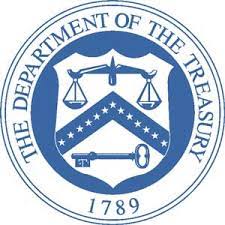






5-Star Service, Trusted & Loved by Hundreds
Your Appraiser Search Ends Here
Your Appraiser Search Ends Here
.avif)

Nationwide Coverage – Appraisals Anywhere in the US

Get it done Onsite or Online

Any Asset, Covered

Defensible for Any Purpose
Frequently Asked
Questions
No Frequently Asked Questions Found.
The concept operates on a straightforward principle: if a borrower fails to repay the loan according to agreed terms, the lender retains the legal right to seize and liquidate the pledged asset to recover their financial losses. These assets can range widely, including real estate properties, vehicles, cash accounts, business inventory, equipment, and investment portfolios.
For borrowers, utilizing collateral can yield significant advantages. Secured loans typically feature more attractive terms, such as reduced interest rates and potentially higher borrowing limits. Individuals with limited credit history or lower credit scores may find collateral particularly beneficial, as it increases their likelihood of loan approval by providing lenders with additional confidence.
However, borrowers must carefully evaluate their financial capabilities before pledging assets. The potential consequences of defaulting—losing a valuable asset like a home or vehicle—underscore the importance of thorough financial planning and realistic repayment assessments.
Lenders view collateral as a critical risk management tool, enabling them to extend credit more confidently and under more favorable conditions. By having a tangible asset backing the loan, financial institutions can mitigate potential monetary losses and create a more structured lending environment.
The dynamics of loan collateral reflect a nuanced balance between borrower needs and lender protections, representing a sophisticated approach to managing financial risk in lending transactions.
The primary purpose of a collateral appraisal is to establish a precise and unbiased assessment of an asset's worth. This professional valuation ensures lenders can accurately gauge the potential risk associated with extending credit. By determining the true market value, financial institutions can make informed decisions about loan amounts, terms, and potential recovery strategies in case of default.
For borrowers, an appraisal offers transparency and credibility in the lending process. It provides documented evidence of an asset's value, which can potentially strengthen negotiation positions and lead to more favorable loan terms. The appraisal serves as an independent verification that protects both parties' interests by establishing a clear, professional understanding of the asset's economic standing.
Beyond immediate lending considerations, an appraisal also captures broader market insights. Professional appraisers analyze current market trends, potential asset depreciation, and comparative values, which can offer valuable context about the collateral's long-term financial implications.
Regulatory compliance represents another critical aspect of collateral appraisals. Financial institutions must adhere to strict guidelines that mandate thorough due diligence in credit extension. A comprehensive appraisal helps satisfy these requirements, mitigating potential legal and financial risks for all involved parties.
Ultimately, a professional appraisal transforms a potentially subjective asset valuation into an objective, defensible assessment. It provides a foundation of trust, accuracy, and informed decision-making in the complex landscape of loan collateralization.
Professional appraisers meticulously examine each piece, considering multiple critical factors such as gemstone quality, metal composition, design intricacy, brand heritage, and overall condition. The process involves precise technical evaluation and expert market knowledge to establish an accurate and defensible valuation.
Jewelry owners seek appraisals for several important reasons. These include securing appropriate insurance coverage, understanding potential resale value, facilitating estate planning, and gaining deeper insight into the piece's historical and artistic significance. Each appraisal serves as an authoritative document that captures the unique story and value of a specific jewelry item.
The examination typically involves comprehensive steps: visual inspection, specialized gemological testing, comparative market research, and detailed documentation. Appraisers use advanced tools and extensive expertise to analyze every aspect of the jewelry, ensuring a thorough and precise assessment that reflects the item's true worth in the current marketplace.
By providing a professional, objective evaluation, a jewelry appraisal offers owners peace of mind and a clear understanding of their treasured possessions' value and significance.
The process typically involves submitting high-resolution photographs that capture multiple angles of the jewelry item. Clients are asked to provide detailed information about the piece, including its metal composition, gemstone characteristics, provenance, and accompanying documentation. These materials help appraisers conduct a thorough initial assessment.
For more complex or nuanced evaluations, live video conferencing platforms offer an interactive alternative. Professional appraisers can examine the jewelry in real-time, asking questions and requesting specific views to ensure a comprehensive analysis. This approach allows for immediate clarification and detailed examination that closely mimics an in-person assessment.
Professional online appraisals adhere to the Uniform Standards of Professional Appraisal Practice (USPAP), maintaining rigorous standards of accuracy and integrity. This ensures that the evaluation meets professional criteria, making the documentation valuable for insurance, estate planning, or potential resale purposes.
The digital approach to jewelry appraisal represents a modern solution that combines technological convenience with professional expertise, providing accessible and reliable valuation services for a wide range of precious items.
Retail appraisers work closely with jewelry stores, focusing on current market values and resale potential. Their insights are particularly valuable for setting competitive pricing and understanding retail market dynamics.
Insurance appraisers concentrate on determining precise replacement values. They meticulously assess factors like quality, rarity, and current market conditions to ensure comprehensive coverage that protects clients' valuable investments.
Estate appraisers bring specialized knowledge to evaluating jewelry within broader inheritance contexts. Their expertise extends beyond monetary value, incorporating historical significance and provenance when assessing antique or heirloom pieces.
Subject matter experts represent the pinnacle of specialized knowledge, often focusing on specific jewelry types or gemstone categories. Their deep understanding allows for nuanced assessments that consider intricate details of craftsmanship, authenticity, and historical context.
Independent appraisers offer unbiased evaluations free from retail influences. Operating autonomously, they provide objective assessments for personal collections, potential sales, and estate planning purposes.
Gemologists, while not exclusively appraisers, play a critical role in the valuation process. Their technical expertise in identifying and grading gemstones and precious metals provides foundational insights for accurate jewelry assessment.
Selecting the appropriate appraiser requires careful consideration of individual needs, ensuring a comprehensive and accurate evaluation of valuable jewelry pieces.
Insurance protection represents a fundamental reason for professional jewelry assessment. Accurate appraisals ensure comprehensive coverage, enabling smooth claims processes in cases of loss, theft, or damage. Precise documentation helps guarantee that the full value of your cherished items is recognized and appropriately compensated.
Tax considerations also merit careful attention. Donations of valuable jewelry require official documentation to claim appropriate tax deductions. An professional appraisal provides authoritative verification of an item's worth, supporting accurate reporting and potentially maximizing potential tax benefits while maintaining strict compliance with regulatory requirements.
Estate planning demands meticulous valuation of personal assets. Jewelry appraisals play a crucial role in fairly distributing inherited pieces, preventing potential family disputes and ensuring transparent, equitable allocation of valuable items among heirs and beneficiaries.
For those considering selling or liquidating jewelry, a professional appraisal becomes an invaluable tool. Detailed documentation provides potential buyers with confidence, facilitating more transparent and potentially more lucrative transactions across various sales platforms, from auction houses to private markets.
Market dynamics continuously influence jewelry values, making periodic reassessment essential. Regular appraisals help owners stay informed about current market trends, enabling more strategic decisions about collecting, preserving, or potentially selling valuable pieces.
A comprehensive jewelry appraisal transcends mere monetary assessment, offering peace of mind and strategic insights that protect both financial interests and personal treasures.
Understanding Jewelry Appraisals
Jewelry appraisals serve as an essential tool for determining the value of your items, especially when they are intended as loan collateral. These appraisals provide a detailed assessment of the jewelry's intrinsic worth, taking into account factors such as the quality of materials, craftsmanship, and current market trends. A qualified appraiser examines aspects like carat weight, gemstone clarity, and metal purity to establish an accurate valuation, ensuring that both the lender and borrower have a clear understanding of the jewelry’s worth. This process helps safeguard the interests of both parties in a loan agreement, facilitating a smooth transaction.
Understanding the nuances of jewelry appraisals can significantly influence the loan amount you may receive. Different types of appraisals exist, including fair market value and insurance replacement value, each serving distinct purposes. For loan collateral, the focus typically lies on fair market value, reflecting what buyers are willing to pay in an open market. Engaging with a certified appraiser who specializes in jewelry can provide you with the most relevant and accurate insights, helping you make informed decisions regarding your collateral in the context of financial needs.
The Purpose of Jewelry Appraisals for Loans
Jewelry appraisals for loans serve a critical purpose by establishing the market value of items being used as collateral. Lenders require an accurate assessment to ensure that the value of the jewelry justifies the loan amount. This process helps to protect both the lender and the borrower, as it allows for a clear understanding of the item’s worth, which can fluctuate based on market conditions and demand. By obtaining a professional appraisal, borrowers can proceed with confidence, knowing that their asset is being evaluated appropriately.
A jewelry appraisal typically involves a detailed inspection of the piece, including its materials, craftsmanship, and overall condition. Appraisers examine the grade of any gemstones, the quality of the metal, and other relevant factors that contribute to the piece's overall value. This thorough analysis not only helps in determining a fair market value but also provides essential documentation that can be crucial during loan negotiations or in case of disputes. Additionally, a well-documented appraisal can offer peace of mind, assuring the borrower that their valuables are correctly represented.
Ultimately, jewelry appraisals for loans bridge the gap between lenders and borrowers, fostering transparency and trust in the borrowing process. They ensure that both parties are aware of the potential risks and rewards associated with the transaction. By facilitating a better understanding of the value tied to personal assets, these appraisals empower individuals to make informed financial decisions. Whether for a pawn loan, a bank loan, or any other type of financing, understanding the purpose and process of jewelry appraisals is essential.
Types of Jewelry That Can Be Appraised
Jewelry appraisals encompass a wide array of items, each with its own unique characteristics and value considerations. Common types of appraisals include those for engagement rings, necklaces, bracelets, and earrings, which may feature diamonds or other precious gemstones. The value of such pieces is influenced by factors like the quality of materials, craftsmanship, historical significance, and current market trends. Additionally, antique or vintage jewelry often requires specialized knowledge due to its distinct attributes and potential for increased value over time.
Beyond conventional jewelry, appraisers also evaluate items such as watches, brooches, and even loose gemstones. High-end timepieces from reputable brands can hold significant value, making accurate appraisals crucial for securing loans. Furthermore, custom-made pieces may need a detailed examination to identify their craftsmanship and materials, which can affect their worth. Understanding the variety of jewelry eligible for appraisal allows borrowers to make informed decisions when utilizing these items as collateral.
The Appraisal Process: What to Expect
The appraisal process for jewelry as loan collateral begins with the selection of a qualified appraiser, who is often trained and certified in evaluating fine jewelry. During the appraisal, the appraiser will thoroughly examine the piece, assessing various elements such as metal purity, gemstone quality, and overall craftsmanship. This examination includes measurements, weights, and detailed observations that document the jewelry's characteristics, which ultimately inform its market value.
Once the physical attributes of the jewelry have been assessed, the appraiser will research comparable items in the current market to establish a fair market value. This involves considering factors such as recent sales data, market trends, and the condition of the item. The goal is to provide a comprehensive and accurate valuation that reflects not only the intrinsic qualities of the jewelry but also its potential selling price in a competitive market.
After the evaluation is completed, the appraiser will compile a detailed appraisal report. This document not only provides the estimated value of the jewelry but also includes descriptions, photographs, and any relevant certifications or documentation. Such thoroughness ensures that both lenders and borrowers have a clear understanding of the asset's worth, which is crucial for securing a loan while safeguarding the interests of all parties involved.
Factors That Influence Jewelry Value
The value of jewelry is determined by multiple factors that collectively influence its market worth. One of the primary considerations is the quality and type of materials used, such as precious metals like gold, platinum, and silver, as well as gemstones, including diamonds, rubies, sapphires, and emeralds. The carat weight, cut, color, and clarity of gemstones significantly affect their desirability; thus, a comprehensive understanding of these characteristics is essential when appraising jewelry for loan collateral.
In addition to material composition, the craftsmanship and design of the piece play an important role in its overall value. Handmade or intricately designed jewelry often commands a premium due to the skill and time required to create them, while mass-produced items may not hold the same level of worth. Historical significance and brand reputation are also crucial factors, as pieces from renowned designers or vintage collections can carry substantial value in the market.
Finally, market trends and economic conditions can greatly influence jewelry valuations. Demand for specific styles or types of gemstones may fluctuate over time due to changing fashion preferences and consumer behavior, impacting overall market prices. Therefore, appraisers must stay current with market conditions and trends to provide accurate and fair assessments, ensuring that jewelry is correctly valued when used as loan collateral.
The Role of Gemstones in Appraisal
In the realm of jewelry appraisals, gemstones play a pivotal role in determining value, with factors such as type, quality, and market demand influencing the final assessment. Each gemstone possesses unique characteristics, including color, clarity, cut, and carat weight, all of which contribute to its overall worth. For instance, diamonds are often graded using the well-known 'Four Cs,' while colored gemstones may require different metrics to evaluate their rarity and appeal. Understanding the nuances of these factors is essential for potential lenders and borrowers alike when considering jewelry as loan collateral.
The authenticity of gemstones is crucial in the appraisal process. Appraisers rely on various tools and techniques to verify the legitimacy of the stones, identifying synthetic alternatives and treatments that may affect value. A genuine emerald may fetch a significantly higher price compared to a treated one, making authenticity verification a vital step. Furthermore, gemstone certifications from reputable gemological laboratories enhance the credibility of an appraisal, ensuring that the stones are accurately represented to potential lenders.
Market trends also play a significant role in how gemstones are appraised for loan collateral. Fluctuations in demand for specific gemstones can greatly impact their market value, making it essential for appraisers to stay informed about current trends and sales data. Seasonal variations, fashion preferences, and even celebrity influences can all shift the desirability of certain stones. Therefore, a comprehensive evaluation that incorporates both intrinsic properties and external market factors is crucial for an accurate appraisal tailored for loan purposes.
Understanding Different Appraisal Methods
When it comes to jewelry appraisals, several methods exist to determine the value of a piece accurately. The most commonly used methods include the cost approach, the market approach, and the income approach. The cost approach focuses on the replacement cost of the item, taking into account the current prices of materials and labor required to create a similar piece. In contrast, the market approach examines comparable sales data, looking at what similar jewelry pieces have sold for in the current market to establish value.
Each appraisal method serves different purposes and can yield varying results based on the context of the appraisal. For insurance purposes, the cost approach may be more suitable, while lenders may prefer the market approach, as it reflects actual market conditions. It's essential to understand these methods to ensure that the appraisal aligns with your specific needs, especially when using jewelry as collateral for a loan. By being informed about the different appraisal options, you can make more confident decisions about your valuable assets.
Choosing a Qualified Jewelry Appraiser
When seeking a qualified jewelry appraiser, it is essential to verify their credentials and experience in the field. Look for appraisers who hold industry-recognized designations, such as those from the American Society of Appraisers or the International Society of Appraisers. These certifications indicate a commitment to professionalism and ethical standards, ensuring that the appraisal process will be conducted with expertise and integrity. Additionally, consider the appraiser's specialization, as some focus on specific types of jewelry, such as vintage or contemporary pieces, which may affect their valuation approach.
Another critical aspect to consider is the appraiser's reputation and references. Seek out reviews or testimonials from past clients to gauge the quality of their work and customer service. A trustworthy appraiser should be transparent about their methodology and willing to explain how they arrived at the valuation. In-person consultations can also help you assess their knowledge and dedication, making it easier to build a trusting relationship as you prepare to use the jewelry as loan collateral.
Importance of Accurate Documentation
Accurate documentation is crucial when appraising jewelry for loan collateral, as it establishes the intrinsic value of the items in question. An official appraisal provides a detailed account of the jewelry's characteristics, including its quality, condition, and market value. This information is essential for lenders, as it enables them to assess the risk associated with the loan and make informed decisions about collateral acceptance. Moreover, comprehensive documentation can prevent disputes between the borrower and lender regarding the value of the jewelry over time.
In addition to securing a loan, accurate appraisal documentation can greatly benefit the borrower in other ways. If market conditions change, having an up-to-date appraisal can facilitate the process of selling or insuring the jewelry in the future. Furthermore, in cases of loss, theft, or damage, solid appraisal records are invaluable for making claims, providing evidence of ownership, and establishing the jewelry's value. Ultimately, thorough documentation not only aids in securing loans but serves as a protective measure for both financial institutions and individuals.
Common Misconceptions About Jewelry Appraisals
One common misconception about jewelry appraisals is that they are solely meant for insurance purposes. While obtaining coverage for lost or damaged items is a significant reason for an appraisal, many people overlook its importance in determining the value for collateral when securing a loan. A well-prepared appraisal can provide a detailed assessment of your jewelry's worth, which can significantly impact loan approval processes and terms.
Another myth is that all appraisers are equally qualified, and their evaluations will yield similar results. In reality, the qualifications, expertise, and methodologies can vary greatly among appraisers. Engaging a certified appraiser with specialized knowledge in the type of jewelry being evaluated is essential to ensuring an accurate and trustworthy appraisal, especially when it comes to using jewelry as collateral for loans.
Additionally, some believe that the appraised value of jewelry directly corresponds to the purchase price or market price. However, the appraisal process considers a variety of factors, such as current market trends, quality of materials, and craftsmanship, which can lead to disparities between these values. Understanding the nuances of jewelry valuation can help individuals better navigate loan options and expectations when using their jewelry as collateral.
How to Prepare Your Jewelry for Appraisal
Preparing your jewelry for appraisal is a crucial step in ensuring an accurate evaluation. Begin by gathering any relevant documents, such as previous appraisals, purchase receipts, or certificates of authenticity. These documents provide appraisers with vital information about the piece's origin, quality, and market value, which can significantly influence the appraisal outcome. Additionally, clean your jewelry meticulously, as dirt and tarnish can obscure design details and diminish the appraiser's ability to assess the piece's true value.
It’s also advisable to consider the context of the appraisal. Think about how you plan to use the valuation, whether for insurance purposes, securing a loan, or estate planning, as this can shape the appraiser's focus. Before the actual appraisal appointment, familiarize yourself with basic jewelry terminology and characteristics, such as the type of metal, gemstone quality, and design elements. This knowledge not only helps you communicate effectively with the appraiser but also empowers you to understand and appreciate the appraisal process.
After the Appraisal: Next Steps for Using Jewelry as Collateral
Once you have obtained a jewelry appraisal, understanding the next steps is crucial for effectively using your jewelry as collateral. The appraisal report will provide a professional assessment of the jewelry's market value, establishing a baseline for negotiations with potential lenders. It is important to review this document carefully to ensure it accurately reflects the condition, quality, and worth of your items, as discrepancies can affect the loan amount you may secure.
After confirming the appraisal details, you can approach various lenders to discuss potential loan options. Each lender may have different criteria regarding the percentage of the appraised value they are willing to offer as a loan. In general, expect to find that lenders typically offer a percentage of the appraised value, requiring documentation such as the appraisal report itself, proof of ownership, and possibly photographs of the jewelry. Being prepared with this information will streamline the loan process, potentially resulting in favorable terms and conditions.
View all Locations
BEST-IN-CLASS APPRAISERS, CREDENTIALED BY:










.svg)










